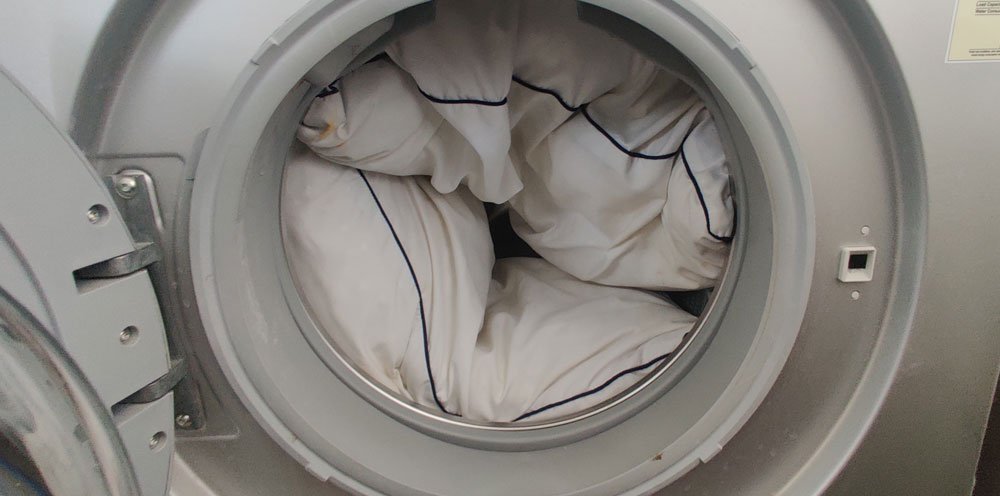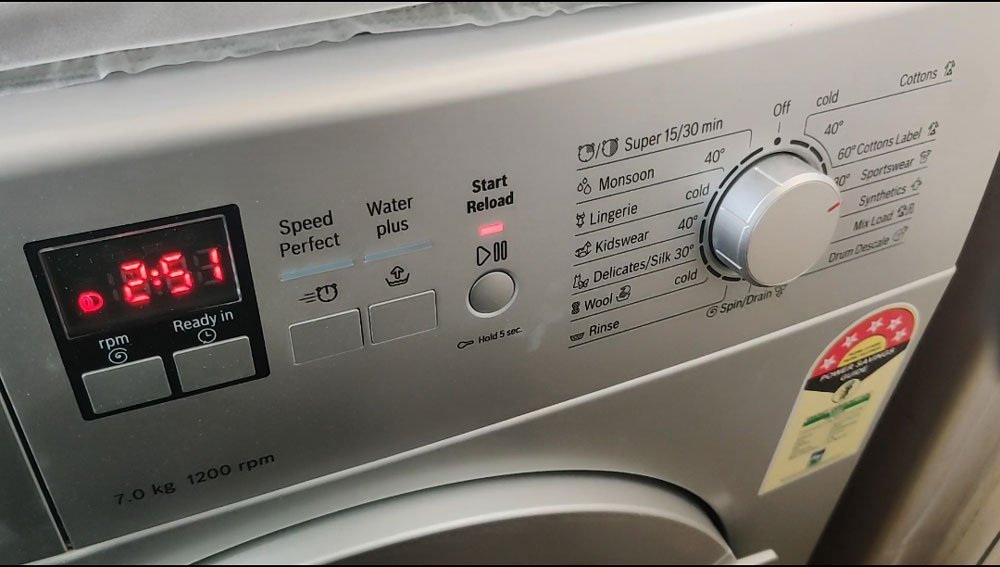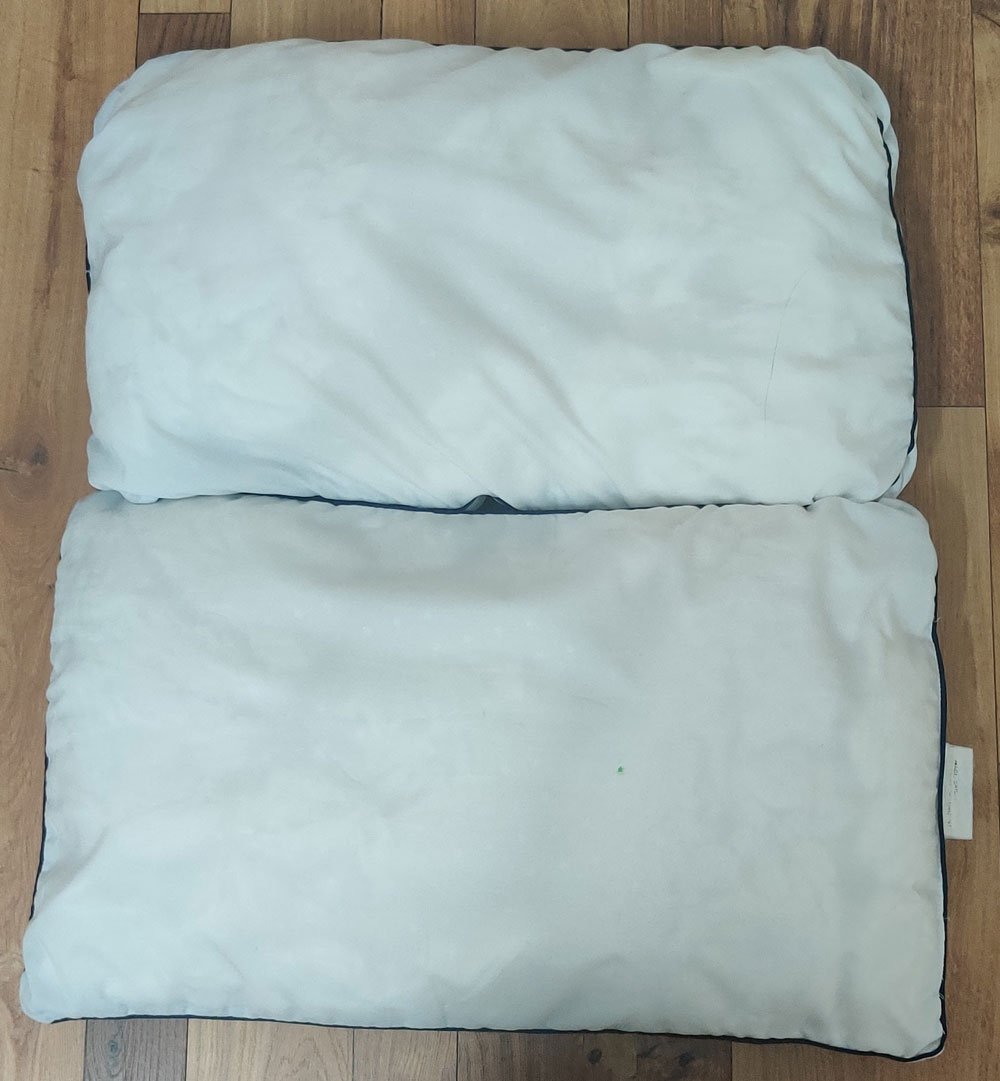We asked our readers how often they cleaned their pillows. And over 50% of them responded NEVER. In fact, many of them did not even know that they had to wash their pillows.
Pillows are one of the most frequently used items in your home. And yet, they are one of the grossest things too. Smeared with sweat, saliva and other body fluids, it is a breeding ground for all kinds of pathogens. Unfortunately, we ignore it because it is covered with plush, fancy pillow covers.
Honestly, up till a few years back, I too neglected my pillows. But then, my son started having a runny nose whenever he hit the bed. The rest of the day, he was absolutely fine. So, I started looking out for answers.
I learnt that pillows can be infested with dust mites, which is one of the leading causes of indoor air pollution. They can’t be seen with naked eyes. Feeding off flakes of human skin and hair, they thrive in moist conditions provided by sweat and saliva. If any members of your family have a runny nose, sneezing, itchy, watery nose or such allergy symptoms, your bedding might be the cause.
Fortunately, bed mites can be eliminated pretty easily. All you have to do is thoroughly wash your bed linens and pillows in 60 degrees Celsius hot water. You could also consider buying mattress protectors and hypoallergenic pillow covers so that they are easier to wash.
Cleaning your bed linens are easy. But pillows? Not quite so. Often after washing, you have clean pillows, but lumpy and unusable.
In fact, a vast majority of homemakers have a huge problem when it comes to washing pillows. They end up so lumpy that you have no choice but to throw them away.
To help resolve this, we got some old pillows with set stains from saliva and sweat. Once upon a time, they were white. But now they had brown and yellowish stains all over. Then, we tested various methods of washing to see which works the best.
Related reading: 12 Must-Have Accessories For Your Bedroom
Pillow Fillings
When it comes to washing pillows, the first aspect that you need to check is their tag to see the washing instructions. If your pillow doesn’t have a tag, check the filling. Recron, fibre and cotton fillings are the most common ones. Exquisite ones made of feathers are also available in the market. They can all be washed in a washing machine.
Note that you should never clean foam pillows in the washing machine. Also, wool pillows should not be washed in hot water as they will shrink and become lumpy.
You may also like: How To Clean Kitchen Tiles?
How Often Should You Wash Your Pillows?
According to cleaning experts, you should wash your pillows every 6 months. If you don’t want to wash it that frequently, use a hypoallergenic pillow protector like this one from AmazonBasics. It comes with a zipper that completely protects your pillows. If you have such a protector and your regular pillow cover on top of it, you may be able to extend the gap and wash it on an annual basis.
Related reading: 8 Things At Your Home You Should Be Cleaning More Often
How To Wash Pillows In Washing Machine?

Time needed: 3 hours
How To Wash Pillows In Washing Machine?
Cleaning pillows in washing machines is fairly easy. But first, check the tag on your pillow and ensure that it is machine washable.
- Loading Into The Machine
Neatly load just two pillows inside your washing machine. If you put just one, it may throw the washing machine’s drum off-balance. Overloading will result in improper cleaning. So two is the magical number for a 6-8 Kg washing machine.
- Add Cleaning Agents
Add 1 Tablespoon of washing powder and 50 ml of a good fabric bleach like Chlorox.
Pour the bleach into the dispenser only if your washing machine takes it into the drum mid-cycle. If it takes in the bleach only towards the end, pour the bleach into the pillows directly.
Unlike many other cleaning agent combinations, bleach and washing powder are safe when mixed together. - Wash Program Setting
Put the washing machine on the cotton wash program setting the temperature at 60 degrees Celsius or as per the instructions mentioned on the tag. Set the spin speed to the maximum possible in your washing machine.
- Stop Mid-Cycle
After 30-45 minutes, switch off the washing machine so that the pillows get soaked thoroughly in bleach and washing powder solution. This helps dislodge the set stains. Resume the wash program after an hour.
- Break The Lumps
If your pillow has a synthetic cover, it will be moderately dry after spin-drying in the washing machine. Fluff the pillow immediately after you take it out. Massage the lumps and pull the fibres apart to break them down.
In the below picture, the pillow at the bottom was fluffed and lumps broken throughout the drying process, while the one at the top wasn’t fluffed till it was completely dry. - Drying
Place it on a stand and air dry it. You could fluff the pillow every few hours to expedite the drying.
Related reading: How To Clean Mold From Rubber Seal of Front Loaders?
Breaking the Lumps
When you search online, some websites suggest throwing in 2-3 tennis balls inside the washer/dryer to fluff the pillow. They say the tennis ball will knead against the pillows while spinning and fluff the pillow.
But we weren’t really able to find the science behind it. While spinning at 800-1400 RPM, due to the centrifugal force, the ball would remain at a point in the drum’s edge and wouldn’t really be beating the pillow as you might think. So, this method doesn’t work. Also, there is a possibility that colour from the print on the tennis ball may bleed into the pillow.
The best method is to dry it as much as possible by spinning it in the washing machine at the highest speed. Once you take it out, pull apart the clumped fibres using your hands. You could also hit the pillow from the sides to distribute the fillings evenly.
Related reading: How To Clean Toaster?
Can You Handwash Pillows?
Foam pillows should be hand-washed. They are not quite difficult as you can squeeze out the water by pressing on the foam.
Pillows with other fillings like recron, fibre and cotton can be hand washed too. But, it requires a lot of effort and time. Preferably, use a large basin or tub.
First, make a solution of bleach and washing powder and fill the basin to quarter its capacity. Then, place the pillow and pour hot water into it. Thoroughly soak the pillow and leave it for 3-4 hours.
Then, use a cloth brush and scrub it thoroughly to remove any stains.
Wash the pillows in plain water 3-4 times to remove any detergent/bleach residues. Squeeze out as much water as possible. Then, break the lumps and air dry the pillows.




